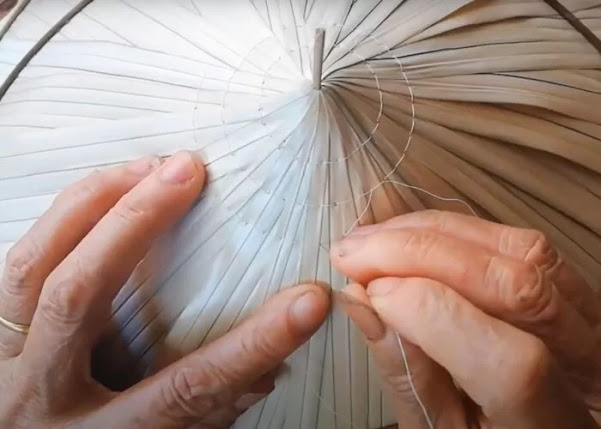The Traditional Conical Hat Making Process
What need is there for wealth or status?
This hat-making craft makes one a figure of respect in the village!
Introduction
The village of Chuong is renowned for its hat-making craft, which has thrived for over 100 years. While it may seem simple at first glance, the process of making hats in Chuong involves many intricate steps and considerable skill.
Selecting Raw Materials
The most common type of hat produced in Chuong is the "la gia" (mature leaf) hat. However, the leaves used are actually "bánh tẻ" (neither too mature nor too young) from the nipa palm (cọ). Experienced artisans venture into the nipa palm forest, expertly selecting large, mature leaves that resemble umbrellas and bundling them together.
The Hat-Making Process
Once the leaves are gathered, the artisans waste no time and begin the meticulous process:
1. Trimming the Leaves: The artisans carefully remove all the veins and use various cutting techniques to retain only the tender, fleshy parts.
2. Sun-Drying: The leaves must be dried under the sun continuously for three days, ensuring they are properly dried, then they are roasted over a fire to enhance their color. This golden hue contributes to the distinctive brand of "la gia" hats.
3. Storage: The dried leaves are then bundled and stored for later use.
Assembling the Hats
Once the raw materials are ready, the artisans begin to assemble the hats:
- They gently fit the leaves into a hat mold and use threads made from the palm leaves to sew them securely onto the frame

- To prevent leakage from the top of the hat, a circular piece of metal is placed inside, followed by shaping the crown.
Final Steps
Numerous additional steps are carried out until a finished "Chuông" hat is produced. The final product is not just a hat; it is a symbol of craftsmanship and tradition.
Cultural Significance
The hats are celebrated in local verses, reflecting their importance:
If you want a beautiful hat, come to Chuong village.
My hat shields you from the sun and dew,
Leaning, it casts a shadow as you walk."
At the age of fifteen, in the bloom of youth,
Innocent and fair, not fearing rain or shine.
Depending on the heart, the needlework flows,
My hands smooth the leaves, morning and night.
"With a twist and a spin, the hat takes shape,
Day and night, through hard work, the hat is formed.
Whenever I share my joys and sorrows,
Meeting together, we bond over the craft."
Once the red thread is finished, the hat is prepared,
Carefully smoked, the hat is then passed on.
Chuong market opens six days a month,
I go to sell hats, hoping for good fortune and sales.
Meeting fate, I’m devoted to my beloved,
Willingly giving my heart of gold to each other.
Loving my craft, I won’t go anywhere,
Dear one, please cherish me, and let’s entwine our lives.
What need is there for wealth or status?
This hat-making craft makes one a figure of respect in the village!"
Vietnamese Version:
Muốn đội nón đẹp thì về làng Chuông".
Nón em che nắng che sương
Nghiêng nghiêng soi bóng che đường anh đi.
Mười lăm “vanh” tuổi dậy thì
Trong ngoài trinh trắng quản gì nắng mưa
Tùy lòng "khâu mũi" mau thưa
Tay em “là” lá sớm trưa phẳng lỳ.
"Bứt vòng", "quay" nón kiêm chi
Ngày đêm vất vả nón thì “ra khuôn”
Mỗi khi tâm sự vui buồn
Gặp nhau hội ngộ mang khuôn “đi ngồi"
Nức” xong chỉ đỏ lồng “nhôi”
Sửa sang "hun khói" nón thời trao tay
Chợ Chuông mỗi tháng sáu ngày
Em đi bán nón cầu may đắt hàng.
Gặp duyên nên thiếp với chàng
Sẵn lòng trao gửi lòng vàng cho nhau
Yêu nghề em chẳng đi đâu
Thương em, anh hãy tình sâu rể làng.
Cái nghề khâu nón “làm quan” trong làng!"
Cần chi chức vị giàu sang
Conclusion
The dedication and artistry involved in hat-making in Chuong village highlight the rich cultural heritage of the area. This craft is not merely a profession; it is a source of pride and identity for the artisans.
Mai Linh Tran





.jpg)
Nhận xét
Đăng nhận xét